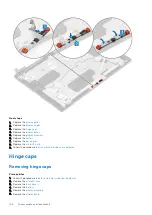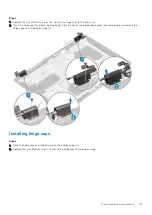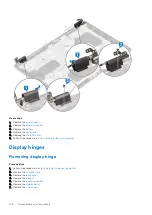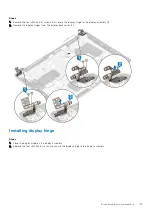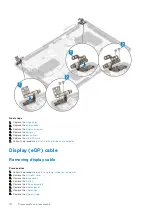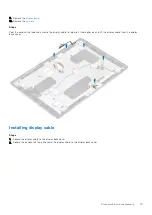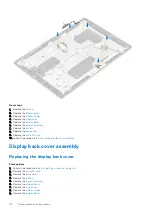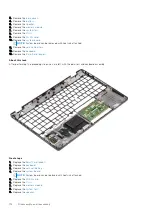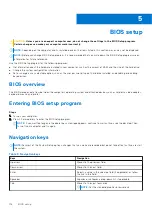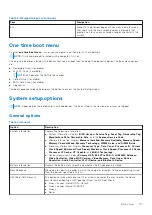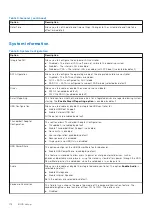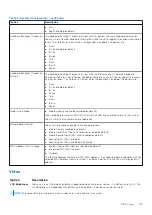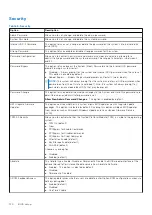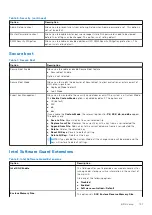
Security
Table 6. Security
Option
Description
Admin Password
Allows you to set, change, and delete the admin password.
System Password
Allows you to set, change, and delete the system password.
Internal HDD-2 Password
This option lets you set, change, or delete the password on the system's internal hard disk
drive (HDD).
Strong Password
This option lets you enable or disable strong passwords for the system.
Password Configuration
Allows you to control the minimum and maximum number of characters allowed for a
administrative password and the system password. The range of characters is between 4
and 32.
Password Bypass
This option lets you bypass the System (Boot) Password and the internal HDD password
prompts during a system restart.
●
Disabled — Always prompt for the system and internal HDD password when they are set.
This option is enabled by default.
●
Reboot Bypass — Bypass the password prompts on Restarts (warm boots).
NOTE:
The system will always prompt for the system and internal HDD passwords when
powered on from the off state (a cold boot). Also, the system will always prompt for
passwords on any module bay HDDs that may be present.
Password Change
This option lets you determine whether changes to the System and Hard Disk passwords are
permitted when an administrator password is set.
Allow Non-Admin Password Changes
- This option is enabled by default.
UEFI Capsule Firmware
Updates
This option controls whether this system allows BIOS updates via UEFI capsule update
packages. This option is selected by default. Disabling this option will block BIOS updates
from services such as Microsoft Windows Update and Linux Vendor Firmware Service
(LVFS)
TPM 2.0 Security
Allows you to control whether the Trusted Platform Module (TPM) is visible to the operating
system.
●
TPM On (default)
●
Clear
●
PPI Bypass for Enable Commands
●
PPI Bypass for Disable Commands
●
PPI Bypass for Clear Commands
●
Attestation Enable (default)
●
Key Storage Enable (default)
●
SHA-256 (default)
Choose any one option:
●
Disabled
●
Enabled (default)
Absolute
This field lets you Enable, Disable or Permanently Disable the BIOS module interface of the
optional Absolute Persistence Module service from Absolute Software.
●
Enabled - This option is selected by default.
●
Disabled
●
Permanently Disabled
OROM Keyboard Access
This option determines whether users are able to enter Option ROM configuration screen via
hotkeys during boot.
●
Enabled (default)
●
Disabled
●
One Time Enable
120
BIOS setup
Summary of Contents for 5500 Series
Page 17: ...Major components of your system 1 Base cover 2 Heatsink 3 Major components of your system 17 ...
Page 22: ...3 Lift and remove the base cover away from the computer 22 Disassembly and reassembly ...
Page 51: ...4 Reroute the WLAN antenna cables Disassembly and reassembly 51 ...
Page 67: ...3 Lift and remove the speakers away from the palmrest Disassembly and reassembly 67 ...
Page 94: ...3 Seat the system chassis on the display assembly 94 Disassembly and reassembly ...
Page 99: ...Disassembly and reassembly 99 ...
Page 102: ...102 Disassembly and reassembly ...

